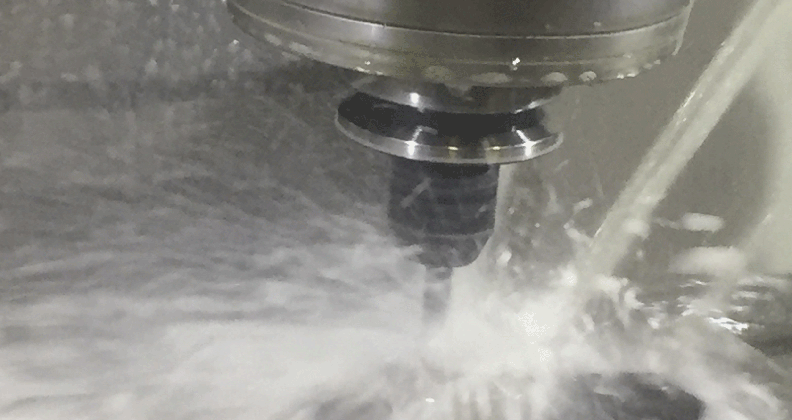
What are suppliers focusing on regarding milling? OEMs need to know the following:
- Suppliers seek to improve lead times.
- The labor market is a concern. A shortage of skilled machinists is one of several challenges to be solved in order to remain relevant and profitable in this ultra-competitive market rife with supplier M&A and consolidation.
- Technology is the biggest factor in economical and productive milling operations. High-speed milling machines can complete complex and precise orthopaedic device designs in one operation. In particular, the 5- and 7-axis models have become more robust, capable of multiple functions all contained within a single setup, saving time and improving efficiencies.
We spoke with four people on the supplier side well-versed in milling to provide you with insight into the process. Companies and experts featured in this edition of Supplier Talks:
- Thomas Fleckenstein, Sales Manager, Jarvis Surgical
- Gus Gutierrez, Operations Manager, MedTorque
- John Phillips, President of Operations, Implants and Instrumentation Division, Phillips Precision Medicraft
- Mark Guerrera, Milling Department Manager, TOMZ
What do you see and hear from your customers? What do they ask for related to milling, specifically?
Guerrera: Cost savings across the board, from simple to complex parts.
Gutierrez: “Do you have 5-axis capabilities?”
Fleckenstein: Competitive pricing and quick turnarounds. Of course, they also demand that parts be manufactured to print specifications.
How does capital investment in milling equipment help you stay competitive?
Fleckenstein: As sales pick up and shop capacity becomes inadequate to handle the increased workload, we must investigate adding to our milling capacity. Capital investment, done wisely, allows us to remain competitive in two main ways. First, it keeps costs down by gaining higher-accuracy, higher-throughput machines.Second, it allows us to maintain lead times within an acceptable limit. Both low costs and fast lead times are essential when trying to remain competitive in the medical contract manufacturing industry.
Gutierrez: Having the machine capability at your disposal makes quoting a lot easier than custom-fixturing your older, less-capable machines. In the past, it would take us longer to get a quote over to the customer because a lot of upfront time was spent on how the fixturing would occur. Most parts we make require positioning for cross holes or angled slots. You can get away with a Trunnion that provided a 2 + 3 axis scenario, but having the full 5-axis DMG Mori DMU 50 has allowed us to compete at a higher level with other suppliers.
In what ways does high-speed milling reduce production costs, while at the same time increase accuracy in parts and devices?
Phillips: It can speed the feed rates while keeping the chip loads on the tooling the same. So, shorter cycle times equate to lower cost per part. Accuracy is guided by the positional precision and repeatability of the machine doing the actual cutting—that is responsible for the accuracy; it is not the result of the speed of the tooling.
Fleckenstein: Attention must be paid to tool life to reap the full benefits of high-speed milling. Running at higher speeds puts greater demands on tooling, potentially leading to faster wear and breakage. This can eradicate any time and cost savings offered by high-speed milling due to increased time and costs required to stop the machine and replace tools.
Gutierrez: It provides uniform cuts that accommodate less mechanical stress and increase tool life, better heat/chip management, which prevents premature tool failure and increased IPM due to chip thinning. Additionally, CAM applications with high-performance toolpaths are good solutions for this type of strategy.
How has milling technology changed? What’s coming in the next five years?
Phillips: The biggest change for us in the last 10 years has been the migration from 4-axis to 5-axis, allowing us to machine more geometry in one setup. This reduces the amount of operations necessary to process a part, as well as all kinds of waste apart from the machine such as transportation, additional fixturing, programming, scheduling, etc. New advancements in the milling world include palletized technology that drastically reduces setups, and the combination of additive and conventional manufacturing in the same machine tool.
Gutierrez: More complex geometry is required for medical devices and components today than in previous years. This translates into smaller tooling, which requires a high RPM and very robust fixturing to minimize any undesired harmonics in the work piece. In the next five years, I would imagine higher RPM (+30,000) machines will be introduced with beefed-up spindles to handle the added RPM. The base of the machinery will have to also be beefed up to allow for the dampening of the harmonics introduced at higher RPMs.
Fleckenstein: Automation has been the greatest change to milling over the past five to ten years, and will continue to be one of, if not the most, important additions to a company’s machine arsenal.
What are the biggest challenges your company faces in milling?
Guerrera: Finding enough skilled workers who can keep up with the technology and want a career in the machinist field.
Fleckenstein: Despite the advantages of high-speed milling, machining accuracy and surface finish remain a concern. Again, the capabilities of the machine are tied directly to the limitations of the tooling. Poor tool wear decreases accuracy and results in poorer surface finish. The rigidity of the machine is just as much a concern to the manufacturer as are spindle speeds and tool wear, as all three must exist and perform in harmony. Also, finding skilled candidates is difficult during normal circumstances, but the recent and ongoing decrease in the unemployment rate has exacerbated the problem.
Gutierrez: Getting the buy-in from our programmers and set-up guys to try new machining techniques such as HEM, chip thinning and macro-programming.




